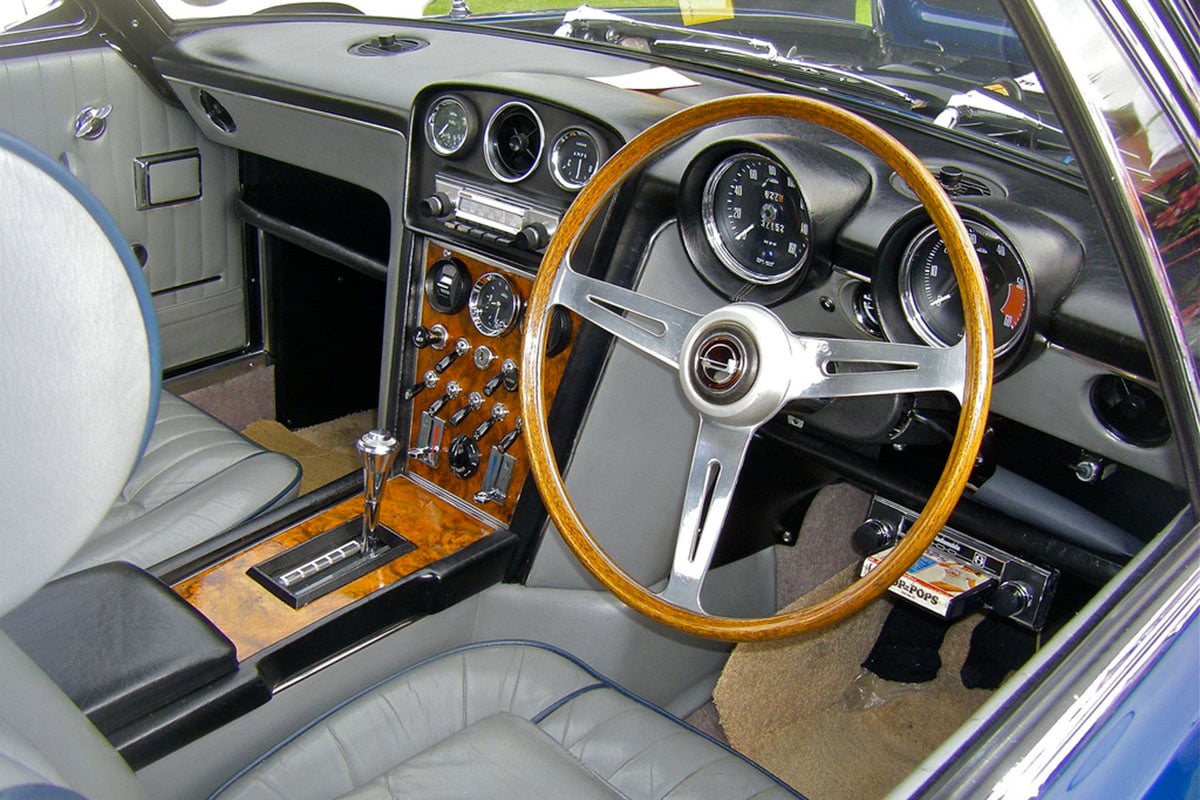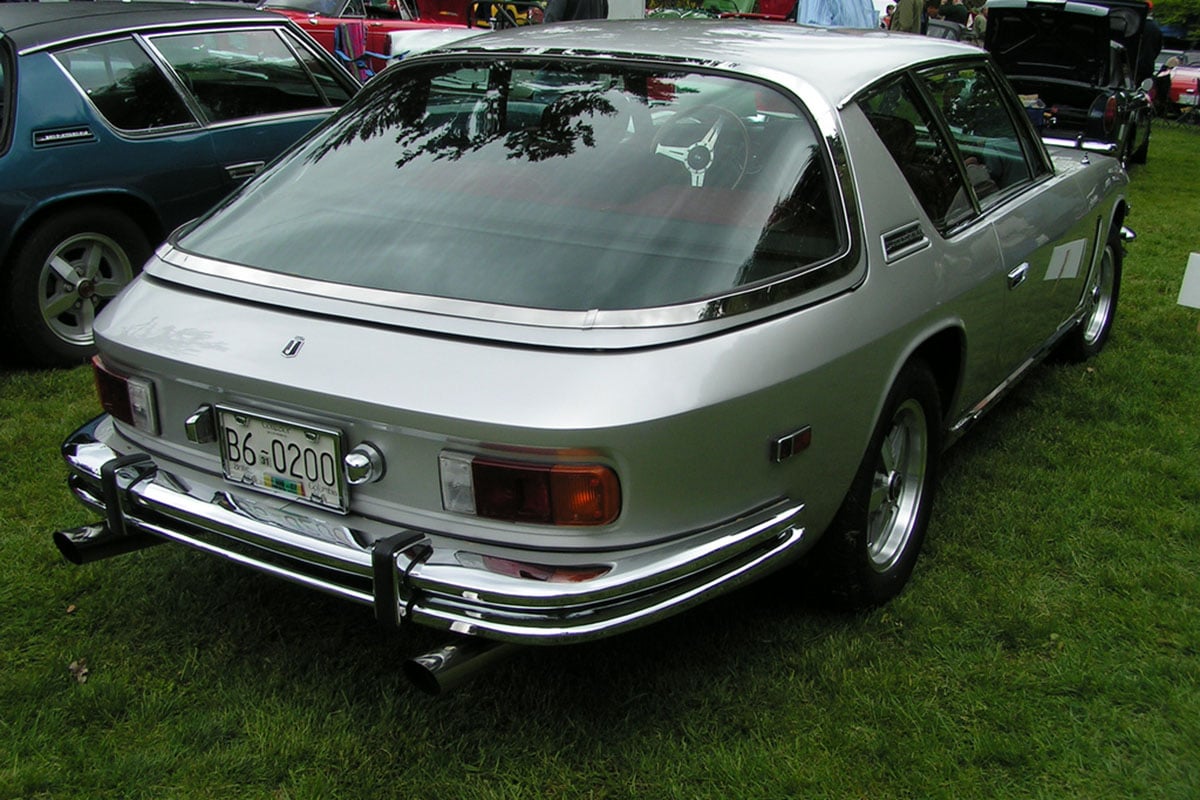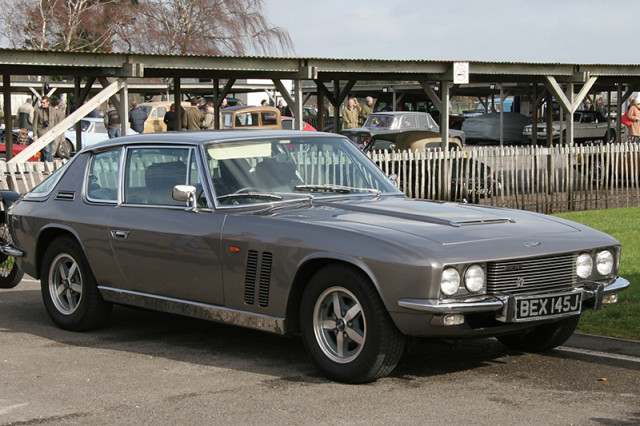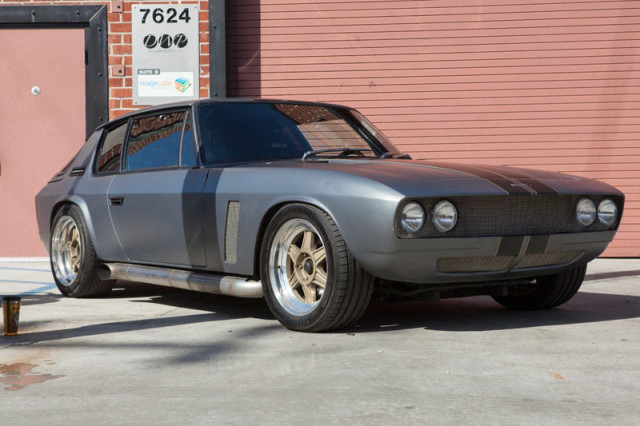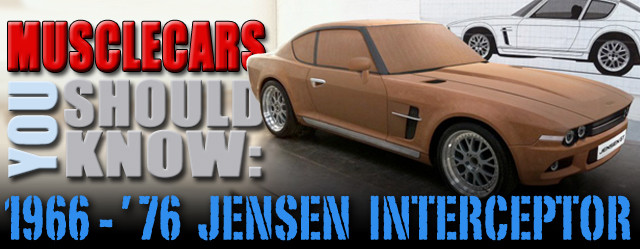 In the 1960s, while the Big Three duked it out on the race tracks and showrooms across America with big displacement V8s in intermediate coupes, for the most part the European manufacturers continued to focus on small displacement mills in diminutive coupes. For the sports car segment that formula had its place, but there were still those overseas who yearned for the kind of grunt that the Americans were enjoying as the muscle car wars raged on.
In the 1960s, while the Big Three duked it out on the race tracks and showrooms across America with big displacement V8s in intermediate coupes, for the most part the European manufacturers continued to focus on small displacement mills in diminutive coupes. For the sports car segment that formula had its place, but there were still those overseas who yearned for the kind of grunt that the Americans were enjoying as the muscle car wars raged on.
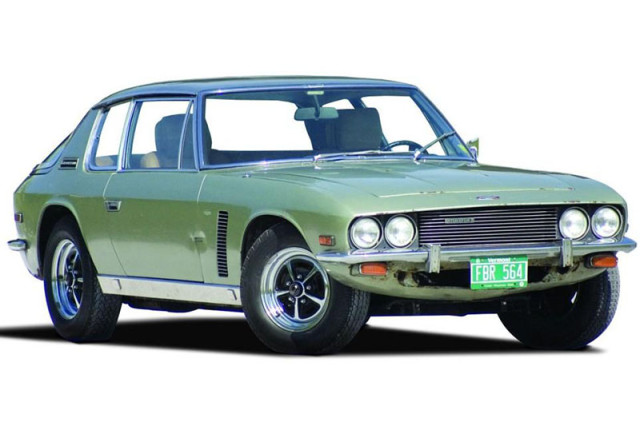
The 1971 Jensen Interceptor. This example is equipped with a 383ci V8 and 727 TorqueFlight transmission. Image: Hemmings
Allan and Richard Jensen of Birmingham, England saw a market that was being under-served in Europe. Previously having made bodies for the Volvo P1800, Sunbeam Tiger, and Austin-Healey, as well as having launched an earlier iteration of the Interceptor in 1950 using much of the engineering and mechanicals from the fairly pedestrian Austin Sheerline, they decided it was time to take a radically new approach. And that new approach included Mopar big-block V8 power.
A Gentlemen’s Express With A Proven Formula
Of course, this wasn’t the first time someone had considered the idea of merging a British chassis with American V8 iron. By the mid-1960s Caroll Shelby was already a household name in the automotive world with the AC Cobra and Shelby Daytona, having taken the British AC Bristol roadster and shoehorning Ford V8s into the engine bay with great success both on and off the track. But no one had considered taking the brutal big-block V8s from Chrysler and giving them a home in a European body.
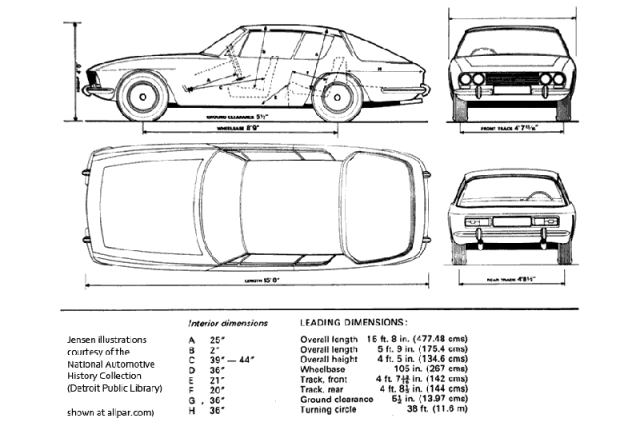 Instead of using an in-house team, Jensen farmed out the new Interceptor’s design to Italian firm Carrozzeria Touring, who gave the new car a fastback design with a large wraparound rear window, a hatchback rear tailgate and 2 + 2 seating arrangements.
Instead of using an in-house team, Jensen farmed out the new Interceptor’s design to Italian firm Carrozzeria Touring, who gave the new car a fastback design with a large wraparound rear window, a hatchback rear tailgate and 2 + 2 seating arrangements.
In line with its high end market aspirations, the new Interceptor came well equipped right from the moment it landed in Jensen showrooms in 1965, sporting reclining seats, electrically controlled windows, high end audio, and various other comfort and convenience options, as well as a live rear axle with adjustable Armstrong Selectaride rear shocks which could be adjusted from within the cabin.
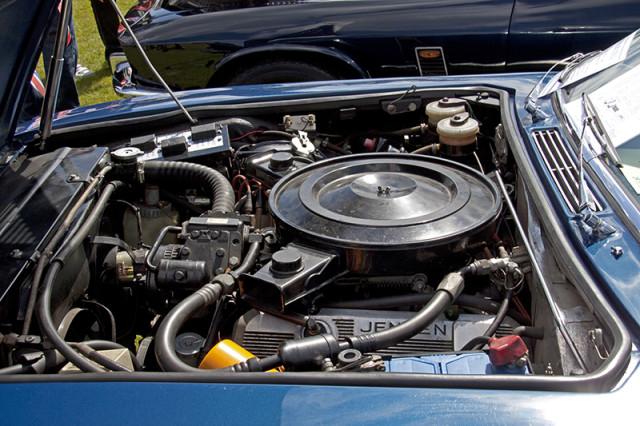 Of course the real party piece of the new Interceptor was under the hood. At launch the car was offered with a choice of two different Chrysler V8 power plants, the 273ci small block V8 or the big-block 383ci V8, with the latter offering 325 horsepower and stump-pulling 425 pound-feet of torque, as well as the option of either a four speed manual gearbox or the TorqueFlight three speed automatic.
Of course the real party piece of the new Interceptor was under the hood. At launch the car was offered with a choice of two different Chrysler V8 power plants, the 273ci small block V8 or the big-block 383ci V8, with the latter offering 325 horsepower and stump-pulling 425 pound-feet of torque, as well as the option of either a four speed manual gearbox or the TorqueFlight three speed automatic.
In a car that weighted in at approximately 3500 pounds (depending on which motor it was equipped with) which sported a limited slip differential with a a 3.07:1 gear ratio, the new top-spec Interceptor offered quite a bit more thrust than British motorists had grown accustomed to.
The UK’s Autocar magazine exclaimed, “To say that the acceleration is electrifying is something of an understatement. The TorqueFlite automatic transmission is standard and really cannot be faulted at all.” The magazine found performance to be on par with the likes of the Aston Martin DB6, Porsche 911 S, and Jaguar E-Type, putting the Interceptor in some revered company.
In 1971, Jensen decided to take things a step further, dropping Chrylser’s venerable 440ci engine into the Interceptor, with a choice between a single four barrel carburetor or a three 2-barrel configuration which we in the US knew as the 440 Six Pack. That multi-carb 440 cranked out the same 390 horsepower (SAE Gross) as the 440 Six Pack found in cars like the Dodge Challenger and Plymouth Road Runner sold in America.
It’s also rumored that Jensen toyed with the idea of offering the mighty 426 Hemi in the Interceptor as well, but due to the costs of the importing the motor, as well as retuning the suspension to handle the Hemi’s grunt, it never became a production reality.
However, other interesting developments did manage to make the cut. The Jensen FF, launched in 1966 and built through 1971, appeared nearly identical to the Interceptor, but offered several interesting mechanical differences. The “FF” stands for Ferguson Formula after Ferguson Research Ltd, the company who created the first all-wheel drive system available outside of off-road vehicles for use in the Jensen FF.
Alongside the FF’s all-wheel drive system, the car also boasted both four wheel disc brakes as well as an anti-lock braking system, giving the FF the bragging rights of having first application of anti-lock brake technology in a car – ever.
However, at a cost of about 30% more than an Interceptor (itself rather expensive for the time), as well as the fact that a left-hand drive version of the FF could not be produced due to engineering limitations, the FF suffered from poor sales, and only 320 FF models are said to have been produced in total.
As the 1970s progressed, Jensen would solider on through both a world-wide recession as well as a rapidly changing automotive landscape, but by 1975 the writing was on the wall. Production of the Interceptor would end in 1976.
Several attempts would be made throughout the 1970s and 80s to revive the marque, including the ill-fated Series 4 which was offered in limited numbers in the late 1980s usually essentially the same mechanicals as the final run of Interceptors in 1976, but with a smaller 360ci V8 making 230 horsepower – and a price tag of £70,000. Needless to say, that experiment did not last long. In 1990 the company and tooling was sold off to another firm, who managed to produce approximately 36 cars by 1993 before they too folded.
The Interceptor Finally Gets Its Due
With its low production volume and general lack of pop culture notoriety, the Interceptor has existed off the radar of most gearheads throughout the decades. However, in recent years a tangible level of renewed interested has emerged. Perhaps the most visible evidence of a Jensen renaissance was the prominent role of a modified vintage Interceptor in the sixth installment of the Fast and Furious franchise, in which the car serves as Lety’s vehicle of choice in the film.
But there’s more than that. Now there’s another company hoping to revive Interceptor’s legacy, and they’re not taking any half measures this time around.
New Car, New Power
Now with full ownership of the brand, the Jensen Group, along with Jensen International Automotive, a company which has been resto-modding original Jensen Interceptors with modern drivetrain and suspension components for years, are hard at work creating the spiritual successor to the Interceptor, dubbed the GT.
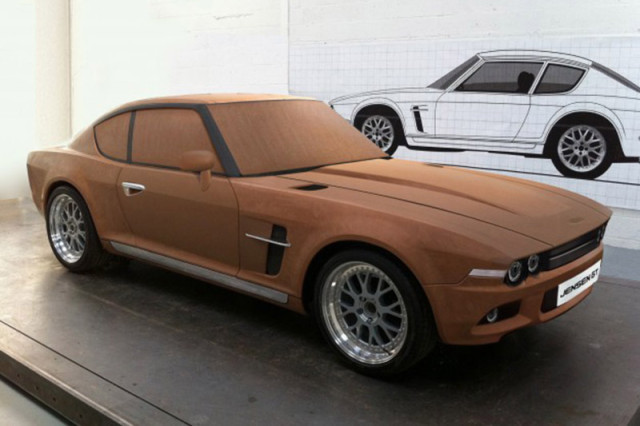 Like the original Interceptor, the GT will get its motivation from a burly American V8, but it may not be what you’re expecting. This time around it’s a supercharged 6.4-liter V8 sourced from General Motors making an estimated 665 horsepower, which will be hooked up to either a six-speed manual or a six-speed automatic gearbox.
Like the original Interceptor, the GT will get its motivation from a burly American V8, but it may not be what you’re expecting. This time around it’s a supercharged 6.4-liter V8 sourced from General Motors making an estimated 665 horsepower, which will be hooked up to either a six-speed manual or a six-speed automatic gearbox.
While we would love to see Chrysler V8 power in the new GT (Hellcat Interceptor GT, anyone?), it sounds like this car will certainly not be a performance slouch by any measure. And in the tradition of Jensen cars of the past, it is also expected to be absurdly expensive – north of half a million bucks – so don’t expect to see a ton of these flooding the streets. Still, getting more 650+ horsepower muscle coupes on the road, even in small numbers, is most certainly a positive trend by our estimate.






